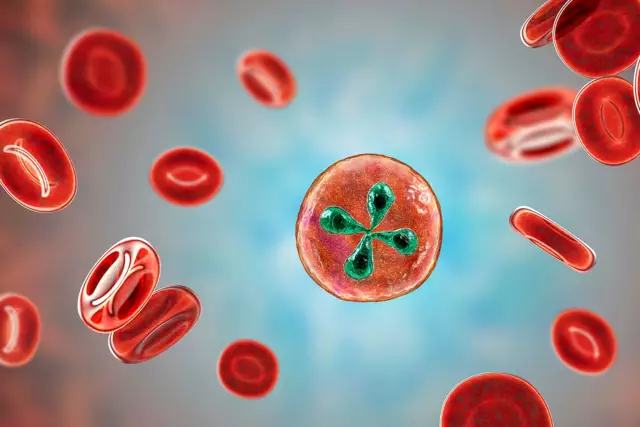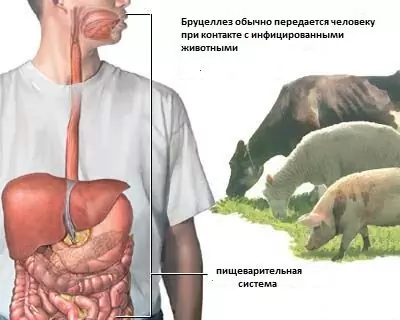- Author Rachel Wainwright [email protected].
- Public 2023-12-15 07:39.
- Last modified 2025-11-02 20:14.
Babesiosis

Babesiosis is an acute infectious disease characterized by intoxication of the body, the development of anemia, fever and a severe progressive course. Babesiosis occurs with the manifestation of jaundice, fever, hemoglobinuria and anemia.
The disease is widespread on all continents with the exception of Antarctica. Most often, this disease occurs in Europe (Yugoslavia, Germany, Scandinavian countries, Poland, France) and on the east coast of America. The most susceptible to the disease are dogs, small and cattle, field mice and other rodents, cats. Several tens of thousands of diseases of domestic animals are registered every year in Europe alone. The carrier of babesiosis is the widespread pasture mite Ixodes ricinus and argas mites.
Babesiosis is also found in humans - it was first diagnosed in 1957 in Yugoslavia. As a rule, shepherds, agricultural workers, tourists fall ill in the spring-autumn period.
What provokes babesiosis in humans?
The causative agent of babesiosis belongs to the class of protozoa. In humans, the disease is caused by three types of Babesia: in America - Babesia micron, in Europe - Babesia divergens, rodhaini. To date, only about 100 cases of babesiosis in humans have been described in the world literature, most of which were fatal.
The disease is more susceptible to persons with severe disorders in the immune system, in particular HIV-infected people and people after splenectomy. Babesiosis is asymptomatic in people with a normally functioning immune system.
Symptoms of babesiosis

When infected through ticks, the incubation period is 10-15 days, and when infected with babesiosis through blood - 6-12 days. Patients experience a sharp rise in temperature up to 40-41 degrees, breathing becomes more frequent, heart function is disrupted. The general condition is depressed, diarrhea may alternate with constipation, and a sharp weight loss occurs.
Milk yield in cattle is reduced several times. At the same time, the milk becomes yellow, sometimes even reddish, and tastes bitter. On the second or third day of the disease, urine with blood appears. In sick sheep, pregnancy is often terminated. The duration of the acute period of the disease is 4-8 days. Mortality in babesiosis in cattle is about 40%, and in small animals - 80%.
In humans, babesiosis predominantly develops against a background of reduced immunity (AIDS patients, elderly people and recently underwent serious illnesses and operations). The first cases of babesiosis in humans were recorded only in the second half of the last century. As a rule, babesiosis is complicated by acute renal failure, acute multiple organ and renal-hepatic failure. Nonspecific pneumonia significantly worsen the prognosis. At the moment, active work is underway to improve the level of diagnosis of babesiosis in humans in many countries.
Treatment of babesiosis
Berenil, acaprine, hemosporidin, naganin, tiargen, albargin, etc. have a good therapeutic effect in babesiosis. Sick animals must be provided with complete rest, provide juicy and green food.
In severe forms of babesiosis in humans, combinations of quinine and clindamycin, or atovaquone and azithromycin are used. In extremely difficult cases, a blood transfusion may be required.
In the absence of adequate treatment, a fatal outcome is possible in about 50-80%. With timely medical care, the prognosis of babesiosis is mostly favorable.
The information is generalized and provided for informational purposes only. At the first sign of illness, see your doctor. Self-medication is hazardous to health!






